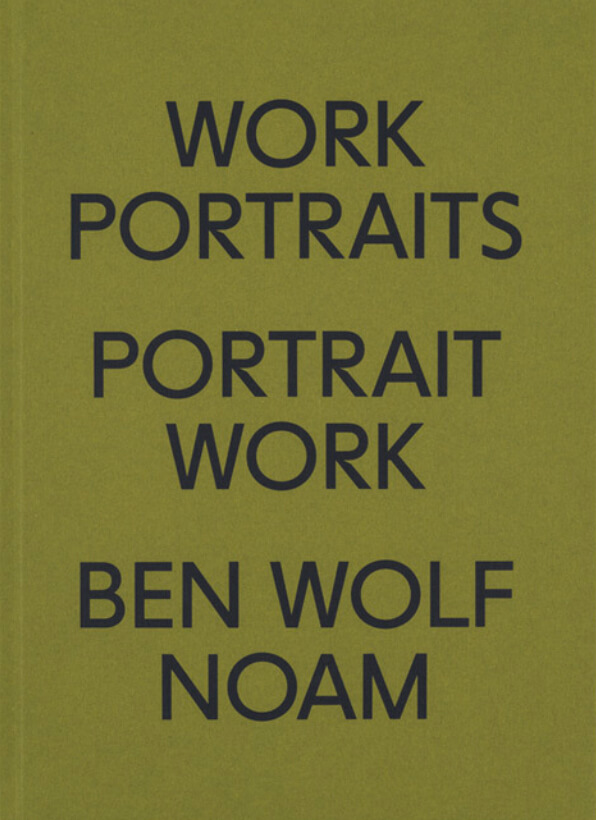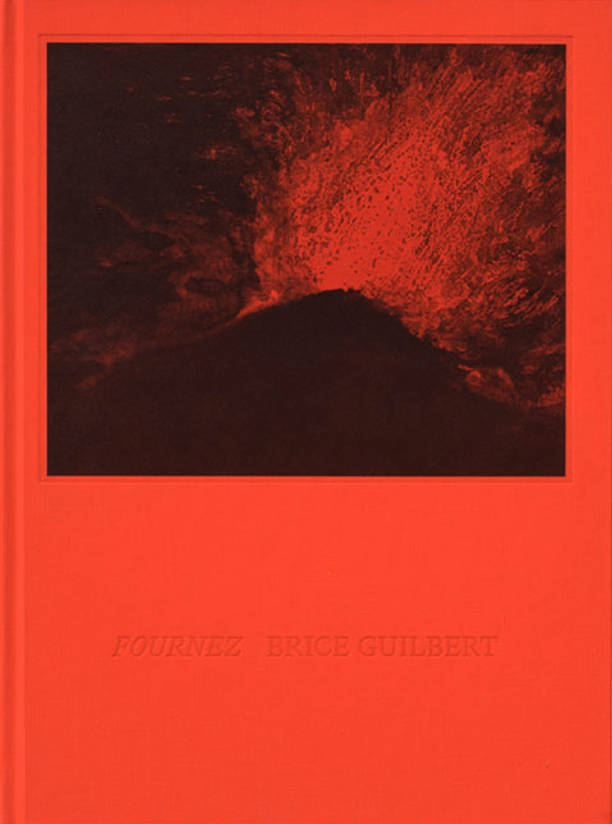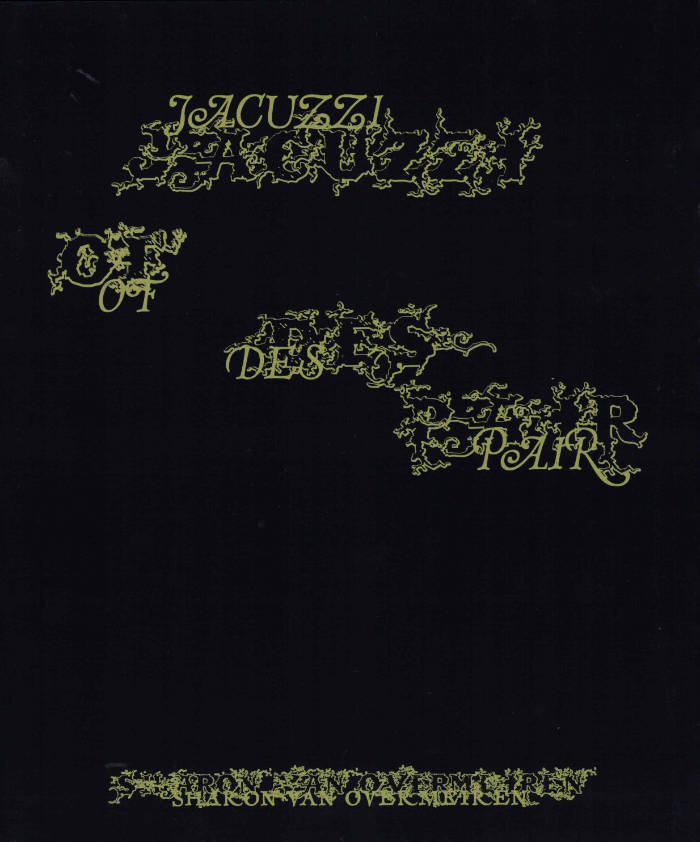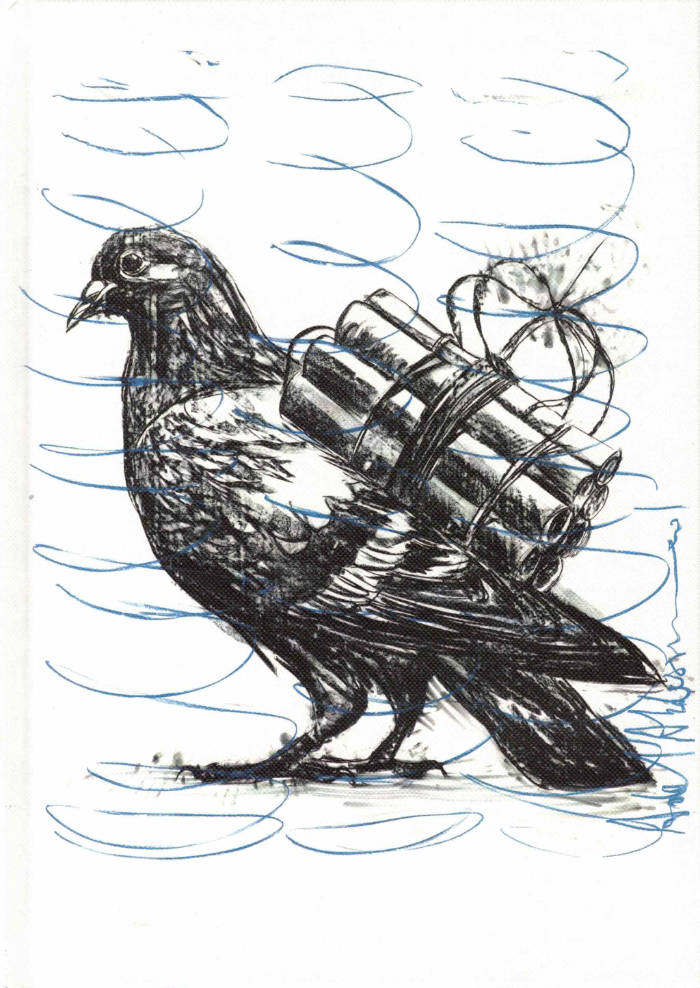Zolo Press
Zolo Press

Work Portraits Portrait Work
60 painted portraits of friends at work from the art world and culture.
In the expanded field of contemporary art, it is common to consider "work" and "pleasure" as one and the same thing. In this sense, it is easy to see how "labor" rapidly doubles as "labor of love," the subtext being that doing what one enjoys is invaluable no matter what. Inhabiting this dichotomy, Ben Wolf Noam's book Work Portraits Portrait Work is both a visual exploration of work in the cultural field and a statement of personal artistic intentions. Presenting 60 painted portraits of friends from the art world and culture in general, the book is a compendium of artists, musicians, chefs, filmmakers, actors, writers, and academics depicted while laboring in their chosen workplaces. At the same time, it is also a conceptual reflection on the complex nature of work in the cultural field, the relationship between subjectivity and collectivity, self-representation and belonging. The outcome is a surprisingly heartwarming object, somehow suggesting that work in the arts is never solely an individual affair. As Dean Kissick writes in one of the four texts specifically commissioned for the book— with Laura Adler, Gabriel Winant, and Ashley Mears —"art is a communal project." Furthermore, Work Portraits Portrait Work serves as a record of a specific time and place—most portraits depict people close to Noam himself, often in studios, apartments, cafés—but it does so embodying a fantasy of such time and place. The subjects of the paintings become a community, and this community becomes a character in Ben's narrative about what making art today might signify: a representation of what artistic representation could look like.

Fournez
Brice Guilbert grew up on the French Indian Ocean island of La Réunion, at the foot of the Piton de la Fournaise volcano. The Fournez series is the result of years of repeated work on the very same motif: the eruption of this volcano.
Using only one proportion and five different canvas sizes, Guilbert's gaze focuses on repetition and composition bordering on abstraction, with an ineffable subconscious undertone and a strong rhythmic interest. All the works are painted on paper or wood using oil sticks made with the artist's own artisanal mixture of oil paint and natural beeswax. This book brings together a selection of one hundred works produced between 2016 and 2023, as well as ten songs written and composed by the artist in Kréyol Rényoné (Reunionese Creole).
Brice Guilbert (born 1979 in Montpellier), artist and musician, lives and works in Brussels, after growing up on Reunion Island in the town of Saint-Joseph. Since 2012, he has been exhibiting paintings and drawings often set to music. He has been painting erupting volcanoes since 2016.

Jacuzzi of Despair
There are countless ways to interpret death, and The Jacuzzi of Despair does not aim to add to them. Instead, it fizzes, swirls, weeps, and sweeps—an unsettled current of images and arrangements, placing Sharon Van Overmeiren's sculptures within a strange narrative of mortality and rebirth. Born from a collaboration with graphic designer Nana Esi, the publication refracts Sharon's work through a series of familiar yet elusive aesthetic mechanisms: from the speculative and ritualistic to the archival and surreal, from the encyclopaedic urge to categorise, to the spectacle of commercial catchphrases. As such, The Jacuzzi of Despair navigates and distorts the symbolic structures by which we typically frame life and death, suggesting a new order wherein their ineffable dimensions do not stand apart but fold seamlessly into one another. What emerges is a disorienting artifact, a publication both buoyant and weighty, performing a slippery, playful, and evocative attempt to grasp the mechanisms by which we make sense of life—only to dissolve them into incoherence, creating the conditions for new meanings to take root.
Published on the occasion occasion at Cultuurhuis De Warande, Turnhout, in 2025.
Sharon Van Overmeiren (born 1985, lives and works in Belgium) makes, in her own words, "fictional sculptures". She finds it difficult to qualify them as fully autonomous pieces, given that at any moment they may cease to exist in their current form of presentation. On a second level, this choice of wording refers to how she lends a voice to her sculptures; by providing them with a scenario based on found stories, taken from life or literature, combined with her own sense of how we are out of touch with the multiple objects that surround us. The sculptures make their appearance as "props" in a composition, installation or drawing, or as protagonists of a video or audio piece. In no small part, these works deal with the growing inability of the human mind to describe and experience "things" beyond its own desires.

One Big Bang
One Big Bang brings together 78 charcoal and pastel drawings from Adel Abdessemed's recent series Nature Morte and Politics of Drawing, where everyday objects, animals, and flowers are subtly charged with tension. Through these works, Abdessemed explores the intersections of beauty, fragility, and unrest. With texts by Hélène Cixous and David Elliott, One Big Bang offers a thoughtful entry into an artist's visual language shaped by memory, myth, and political urgency.
Published following the eponymous exhibition at Projeckt Brussels in 2024.
Adel Abdessemed (born 1971 in Constantine, Algeria, lives and works in Paris and Berlin) deconstructs identity codes, tackling head-on the tensions that permeate our society. His works, with their typical simplicity—sculptural installations, drawings, photographs, videos and performances—echo precise facts and familiar situations, but go beyond narrative commentary and militant criticism. Adel Abdessemed questions, among other things, the social and economic status of the artist in a system where his foothold is slight, by shrewdly keeping a distance in a gesture of subversive and committed resignation.
Abdessemed refuses to be limited to a single ideology. In his early works he passionately tackled religious, sexual, and taboos subjects and his later exhibitions have often focused on the theme of global violence. In an interview with Elisabeth Lebovici he stated, "I do not live between two cultures. I am not a postcolonial artist. I am not working on the scar and am not mending anything. I am just a detector … In the public sphere, I use passion and rage. Nothing else. I don't do illusions."
Sometimes reduced to a simple word, as in "Mohammedkarlpolpot" (1999), a condensation of names evoking totalitarism and religion, and sometimes complex and monumental installations such as "Habibi" (2004), a suspended skeleton of 17 meters propelled by a jet engine, Abdessemed's practice belongs to a new generation of artists who appeared recently on the French art scene, looking to offer another perspective on culture and identity.

CLOUDS
Clouds are, narratively speaking, some tricky things. They are both full and empty. They are vacant and shifting, a site of tension between the material and the immaterial, the perceptible and the invisible. Clouds is also the title of German artist Esther Kläs’ first monograph, which spans over 15 years of sculptures, drawings, and performances. As an organic rendering of a complex practice, this book mirrors both the formal impact of each artwork and the conceptual outreach of a collection of gestures, attitudes, movements, and moods happening around the works. Because Esther’s practice has no tight borders or hard edges. Each piece escapes definition and breaks loose from the patterning power of language. Still, regardless of the medium, everything Kläs does seems to have a common denominator: it is a reiteration of a way of thinking – her way of thinking – through a body in space – her body, as well as a social body.
With four commissioned contributions (Marc Navarro with Ester Partegàs, Julie Boukobza, Chloe Chignell, and Francesco Pedraglio) and six short, loose texts edited by Elena Tavecchia and Kläs herself, the book is a canvas whose patterns shift following the artist’s elaborated work. What stays hovering in the air are sparks of decisions, constant movements, recurrent repetitions, and propositions.

Scrapyard Abstraction
Machteld Rullens' second publication with Zolo Press documents three years of works, friends & family moments, and travels in Senegal, NYC, LA, and Vincent van Gogh's house…
"A friend told me my works are "warmly laconic" without becoming ironic or cynical. They show serious material research with humor and a dark side. In this book, I share my personal life and way of working. It might clarify my obsession with art, art history, the studio, travels I made, and the way I use my analog camera. My work has become more mature and I've turned a little grey myself. In the work I use all the possibilities of the box. Paint and surface become one. The cardboard is not a background that is separate from the paint. In this way, I expand my visual research, which I do not only as a painter but also as a sculptor. The pictures taken over the past years were made while spending time in a small village in Senegal, in Vincent van Gogh's house, my studio in The Hague, Los Angeles, Brussels, and my friend's place in Germany." — Machteld Rullens
Machteld Rullens (born 1988 in The Hague, Netherlands) works with sculptural elements that have a strong link with painting but are rarely applied with a brush. She uses everything that's available and that reflects her basic mood. That mood is a reflection of the time and of the world that, in spite of all its beauty, is overstimulated and possible even bored. Her wall objects, made from found cardboard boxes and epoxy resin, are full of emptiness. Rullens started painting on cardboard boxes when she ordered art supplies for the studio and noticed that the boxes could be tackled in a far more aggressive and impulsive way than for example a blanc canvas. She shapes and rearranges the cardboard boxes, something that was once fragile into something sturdy, relating to elements of play, composition, and architecture.

Birthday
Bridget Mullen is the ruler of an unruly roost. Between 2021 and 2023, she gave birth to forty-seven paintings, each twelve-by-nine inches: kin ugly and cute, monstrous, fleshy, repulsive, droopy-eyed, and sneering as they cross the universal threshold into the no less frightening world that awaits. Birthday reunites Mullen's uncanny litter alongside a conversation between the artist and Lucas Blalock.
The paintings in New York-based artist Bridget Mullen's Birthday series utilize two distinct parameters to guide the creation of the iterative works: a vertical orientation at an intimate scale of 12 x 9 inches and a visualization of perhaps the ultimate creative act—the moment of birth. Through this consistent scale and thematic hyper focus, the artist employs endless formal variations in composition, color, and paint application. The result is a series of paintings that share a common structure yet champion individuality.
Contrasting colors provoke a visible tension, one that is at times compressed and, in other moments, elastic. Suddenly, abstract shapes come into focus as human anatomies, capable of expressing emotion. Undulating lines of various thicknesses and layered colors squeeze together, revealing peculiar faces and gestures that emerge from a central point. The repetition of thin lines creates a visual stutter of pigment, alluding to the passage of time or rapid movement.
The works in Birthday build on Mullen's practice, combining color, decisive mark-making, intuition, and experimentation to conjure psychedelic configurations. Sculptural dimensionality and flatness, representation and abstraction, and solidity and fluidity, serve not as dichotomies within these works, but as two complementary halves of a whole. Together, the forms and figures of the Birthday series are imbued with a sense of life, pregnant with agency and potential.